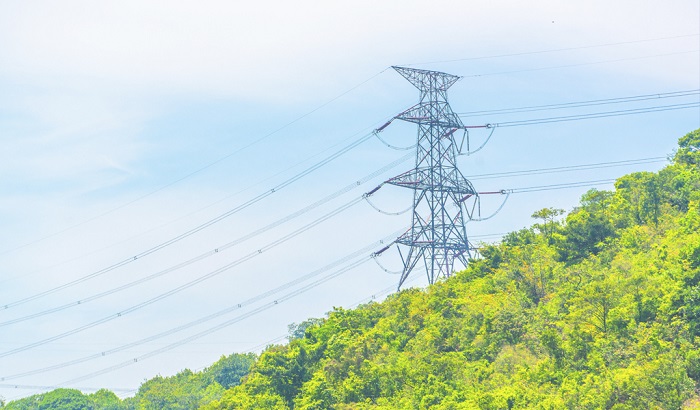We apply AI and advanced analytics in order to generate efficiencies in our processes and thus increase the availability of our infrastructures, boost the integration of renewables and improve the safety of our professionals.

Electric grid infrastructures and asset management
Completed

Red Eléctrica is implementing a new vegetation management model for its power lines. Until now, the identification of vegetation species was done through manual photo-interpretation techniques.
Through this project, alongside our partner Overstory, we have created a series of algorithms that automate the photointerpretation of tree and shrub species from satellite images and images from the National Aerial Orthophotography Plan (PNOA).
Species identification for the province of Zamora.
The analysis is extended to the rest of the geography, addressing the identification of species according to each region.
To optimise activities and transversal processes
Active

Enables the budgeting and planning of investment projects in the Transport Network using all the information available and specific to each project. These are feedback and automatic learning models to be applied during the life cycle of the projects.
Objective: to improve management of the investment activity of the company and decision-making in the DC and DGT based on the use of the information generated in the activity of the projects.
To deploy a new version of the cost and duration estimation models for investment projects.
Increase employees safety and wellness
Completed

The goal of this project is to switch from a reactive/preventive model to a predictive model in the area of occupational health and safety. We make use of the traceability and digital footprint of the data and information provided by the management tools and applications of the Red Eléctrica Group to make analyses with descriptive (what happened), predictive (what could happen) and prescriptive models (what can we do to stop it happening) The first goal of the project is to use Artificial Intelligence methods to create a probability indicator of the risk of accidents and issues associated with any maintenance and construction work.
Concept and data modelling.
Data collection, ordering and processing.
Data analysis and visualisation of the results.
A foundation is created for applying models for predicting the risk of accidents and issues related to maintenance and construction work.
Operation of the electrical system and integration of renewables
Active

The CONPP project aims to develop a methodology for forecast probability intervals calculation, combining the intervals of the individual predictors of the suppliers with the best accuracy, which provide the hourly demand and production forecast curves at the level of each system. The main objective of this work is the development of a procedure for the construction of prediction intervals associated to forecasts obtained as combinations of independent model and supplier predictors.
• Definition of methodology to calculate the probability bands of the combined wind forecast from the probability bands of the individual forecasts participating in the combination.
• Definition of methodology to assess the goodness of fit of the probability bands provided by the individual forecasts of the different suppliers.
• Exploration and evaluation of its implementation in the field of renewable production (wind and photovoltaic) and demand, as well as to apply it to all peninsular and non-peninsular systems.
New services and business models
Active

Casandra is an innovative response to the changing needs of electrical planning which offers adaptable tools for carrying out electrical studies with which to address current and future challenges of the sector in an agile and efficient way. The project came about in order to unite these and other initiatives and provide a common response to the needs of the Electrical Planning process, offering an ambitious response and comprehensive solution to address three essential areas in the electrical planning process.
• Since 2019, we having been working on the development of new tools to improve agility and efficiency: a web portal for interacting with external parties, a web portal for planning, and a web portal for editing, viewing, and simulating electricity grid models.
• Currently, several modules are underway and at various stages, combining internal and external developments. These latest developments were achieved jointly with the consultant Apogea, with significant advancements in the different lines of work.
• The development of online libraries that will help gather data for planning and comparing different future scenarios. This module is expected to be completed before the end of the year.
• A specialised database that will allow multiple versions of the electricity grid to be managed, with change monitoring. We expect it to be ready in the first six months of 2024.
Electricity grid infrastructure and asset management
Active

The project is of vital importance for the future of visual inspections, as it represents a significant advancement that will help technicians easily detect anomalies in a grid of over 45,000 km of high-voltage lines. The synthetic image project, within the DALIA framework, is making advancements in training artificial intelligence models with synthetic images to improve the software’s efficiency and scalability.
The objective is to improve the efficiency of visual inspections of overhead lines, an essential task in guaranteeing the supply of electricity to the population at all times.
Operation of the electricity system and integration of renewable energy sources
Active

Generation and demand forecasts significantly affect the company's high-impact activities, such as guaranteeing the customers' electricity supply, ensuring appropriate planning of the transmission grid or explaining studies on electricity demand coverage to stakeholders. The main purpose of this project is to harmonise the forecasting models and methodologies used for the various processes and to conduct research to improve the different forecasting models and their implementation in order to better adapt to the current and future challenges of the energy sector.
• Completion of the project is scheduled for the coming months, with the aim of implementing the improvements identified to provide a more efficient and stable service.
Safety and wellness of people
Finished

The project involved the automatic creation of stakeholder profiles of Red Eléctrica's transmission planning team and the identification of their perception of the company based on the analysis of communications in text format, using Argilla's Biome tool.
• Phase I: Development of a text-based communications database for training AI models
• Phase II: Data analysis using the Argilla tool.
• During the project, several versions of the stakeholder model were generated, trained on each interaction with a larger amount of data.
Electric infrastructures and
asset management
Active

Red Eléctrica currently has 1,200 kilometers of submarine cables on service that enable the transport of electricity under the sea or ocean, but their maintenance and potential repairs are very complex due to their difficult access. With the aim of developing a solution that facilitates the work of technicians and engineers, Elewit, through its fourth Venture Client program, launched a project with the startup Akselos, a company that has one of the most advanced engineering simulation software in the world.
• PHASE I: The project aimed to develop a software tool, adapting the Akselos algorithm to Red Eléctrica's submarine cable study scenarios, thus generating a mechanical model of the cable that could take information from bathymetries for advanced calculations.
• PHASE II: Thanks to the positive results of the previous phase, a detailed analysis of a free span detected in the Majorca-Ibiza cable will be carried out with the developed software and eventually, an analysis focused on the free spans of the route of the future submarine link between Tenerife and La Gomera will be carried out.
• During the project, two possible application cases were analyzed: to evaluate the effect of free spans on the cables and to perform simulations before the maneuvers. The results of the project showed that the software developed is precise enough to apply the Akselos technology to real case studies.
Safety and wellness of people
Active

The analysis of documentation involves a high workload given the extensive volume of information involved. As a consequence, Elewit, in collaboration with the Grid Access Department, has promoted this project in which we have explored how LLM (Large Language Models) used in generative AI can help streamline processes that require analysis and summarization of extensive and heterogeneous documentation. Specifically, a proof of concept has been developed to evaluate and validate the advantages offered by this technology compared to others which has demonstrated that generative AI is a potential key technology to streamline and simplify this type of processes.
• Phase I: Development of a Proof of Concept with Red Eléctrica's grid access team to evaluate and validate the advantages offered by generative AI in streamlining processes that require analysis and summarization of extensive and heterogeneous documentation.
• Phase II: Future projects with this department of Red Eléctrica on various use cases applying generative AI to improve efficiency in their processes might be proposed.
• The results obtained through this proof of concept have confirmed that generative AI is a potential key technology in this type of business processes in which knowledge of applicable legislation and existing precedents, as well as technical knowledge, play a fundamental role.
Electrical grid facilities and asset management
Completed

The GridCal and Newton improvement project for electrical planning, developed by Elewit and Red Eléctrica’s electrical planning and system operation model teams, has represented a significant step forward in electrical grid simulation capabilities. It uses the open-source software GridCal as an interface for the design and simulation of electrical grids, complementing other tools in national planning.
• Phase I: the project has enabled Red Eléctrica to optimise the use of the open-source software GridCal as an interface for the design and simulation of electrical grids, complementing the set of tools used in national planning analysis.
• Phase II: being open-source software, GridCal allows its development to continue independently of the project. Additionally, Elewit and Red Eléctrica plan to use GridCal in European projects such as TwinEU and InterScada.
• The GridCal and Newton improvement project for electrical planning represents a significant step forward in the simulation capabilities of electrical grids, as new advanced functionalities have been developed to meet current needs and foresee future requirements in the electrical sector. From an economic and functional perspective, the use of sophisticated open-source software allows for faster and more satisfactory validation and adoption of R&D&I than one-off effort.